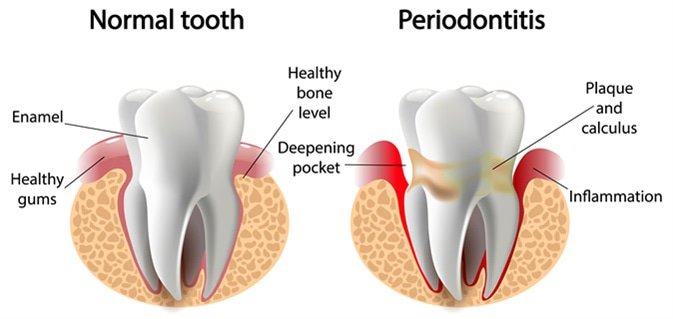 Periodontal disease (i.e. gum disease) is when the gums become inflamed leading to gradual destruction of the bone and ligament that anchors the tooth to the jaw. Periodontal disease is mainly caused by bacterial plaque (sticky film around the teeth). Periodontal disease includes gingivitis and Periodontitis and can lead to tooth mobility and tooth loss.
Periodontal disease (i.e. gum disease) is when the gums become inflamed leading to gradual destruction of the bone and ligament that anchors the tooth to the jaw. Periodontal disease is mainly caused by bacterial plaque (sticky film around the teeth). Periodontal disease includes gingivitis and Periodontitis and can lead to tooth mobility and tooth loss.
Periodontal disease can be painless. Some of the warning signs are:
-Red and swollen gums
-Receding Gums
-Bleeding gums especially when brushing and eating
-Gum abscesses/pus between the gums and teeth
-Loose teeth
-Spaces appearing between teeth
-Halitosis
There are different types of treatment depending on the severity of the disease.1 – Gingivitis-the gums are red, swollen and tender causing them to bleed easily during brushing and flossing.
Untreated gingivitis can lead to Periodontitis. It ranges from a mild form (bone loss starts around the tooth) to advanced form which could lead to tooth loss.
Treatment:
Treatment is easier and likely to be more successful in the earlier stages. That is why your dentist always carries out an examination of your gums at your routine check-ups. The initial treatment is carried out by the Periodontist or hygienist depending on the severity of the disease, age, medical history or preference. Regular visits to the hygienist will help to maintain optimum health of your gums.
